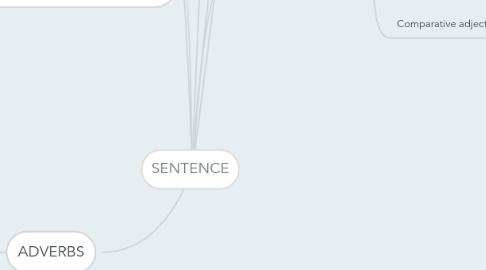
1. PART OF A SENTENCE
1.1. At least one sentence must contain a subject and a verb. Sometimes we can omit the subject if it is understood.
2. ARTICLES AND DEFINED INDEFINITE
2.1. The indefinite article used before count nouns, wherever they appear in the singular, if the name is not in plural article is used. Here are some phrases: I have a ball. -> I have a ball. She is with a man. -> She is with a man.
2.1.1. The definite article It is used in front of nouns to specify the person, animal or thing to which we refer. You can accompany the name in singular or plural. It is also used with nouns that have already been mentioned. The moon is bright. -> The moon is bright. (There is only one moon) I live in my house, the house is comfortable. -> He lives in my house, the house is comfortable.
3. ADVERBS
3.1. An adverb can modify another adverb, usually to indicate the degree or extent modifies a verb or an adjective. They are written before the adverb they modify. ADVERBS most used:
3.1.1. Above All week Already Always Better Carefully Certainly Completely Fast Finally Here Never Now There To very Tomorrow Usually Well Yesterday
3.2. There are simple adverbs, formed by a single word, or compounds formed by two or more words
4. Gender
4.1. Gender applies to both nouns, adjectives and how to articles. Many nouns themselves do not indicate gender, but is indicated by the articles and adjectives.
4.1.1. The items are:
4.1.1.1. 1. Male: the, the, the, one, one. 2. Female: the, the, a, a. Gender male we use to refer to the males of most species, males and the following types of nouns Female gender is used to refer to females, women and to the following types of nouns. Neutral In Spanish there are no nouns have a gender-neutral itself gender
5. FORM OF A SENTENCE
5.1. there are four types of common prayers in English. Each type of prayer has a different purpose:
5.1.1. • to make statements (declarative oractiones) • to ask questions (interrogative) • to give orders, suggestions, warnings (mandatory sentences) • to express strong emotions with affirmative sentences (exclamatory sentences)
6. Nouns
6.1. a noun is a word that can represent both a person, a thing, or as a place.
7. The adjectives
7.1. The adjectives are one of the eight parts of speech or parts of speech and are exactly the same as the "adjectives" in Spanish, are words that describe or modify a noun or noun in a sentence. Although less common, the adjectives can also modify or describe lospronouns or probombres.
7.1.1. demonstrative adjectives .
7.1.1.1. demonstrative adjectives are what determine a close relationship of a person, animal or thing or those who speak. Determine the location of the noun with the other elements of prayer.
7.1.1.1.1. EXAMPLE
7.2. Comparative adjectives and superlatives
7.2.1. adjectives we can use to compare things, people, concepts , etc. Now let's see how the comparative adjectives and superlative adjectives work
7.2.1.1. Adjetivos Comparativos
7.2.1.2. In the ' Introduction to Adjectives ' we have focused on things like comparing equal or inferior to the other . Now we will focus on learning to say that one thing is "more " than another . For that we must use the comparative form of the adjective
7.2.1.2.1. EXAMPLE
7.2.1.3. Los adjetivos superlativos nos servirán para decir que algo es “lo más…”.
